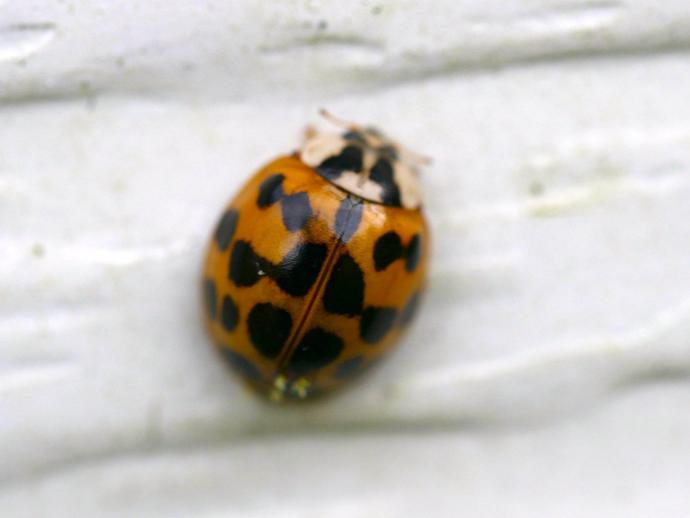October 20, 2020
Ben here with Tuesday's #BenInNature update! I did a nature post about the multicolored Asian ladybeetle (Harmonia axyridis) way back in May, but now seems like a good time to revisit these little guys. Over the last few days, I've noticed that they're all over the outside of my house -- and in fact, if I stand still for too long outside, they'll start landing on me! You've probably also noticed a bunch of these beetles on the outside or inside of your home just lately, and you might be wondering why they're trying to move in.
Just to refresh your memory (and mine, for that matter), multicolored Asian ladybeetles were intentionally introduced in the U.S. in 1916 and their population began to explode in the 1980s. While they're effective in our gardens because they eat aphids and other pests, they have caused the populations of our native ladybug species to decline and they have a tendency to invade our homes when fall arrives. In fact, in some parts of the country, they're known as "Halloween ladybeetles" because they suddenly seem to appear everywhere in October!
The reason they begin invading our homes is pretty simple. These beetles are overwintering insects, and when the days get shorter and the weather turns cold, they start looking for little crevices to hide in until the weather warms up again. In nature, they hide under tree bark or in leaf litter, but our homes offer up a wonderful variety of nooks and crannies to hide inside.
If you don't want your home invaded by multicolored Asian ladybeetles, an ounce of prevention is worth a pound of cure. Seal any cracks around windows or window AC units and make sure the weatherstripping on your doors is still solid. If you do find them inside your home, you can sweep them into a jar or even vacuum them up (just be sure to dump the vacuum bag outside immediately or they'll manage to escape again).
If you do find these ladybeetles in your house, there's no cause for concern. The worst they can do is release a yellowish fluid when they're disturbed; it smells odd and can stain surfaces, but it's not dangerous. I've heard multiple claims that these beetles can pinch you with their mouthparts if they feel threatened, although it's supposed to be no worse than a pinprick. Having said that, I've handled a bunch of these guys and I've never been bitten by one, so take it with a grain of salt.
ABOUT #BenInNature
Social distancing can be difficult, but it presents a great opportunity to become reacquainted with nature. In this series of posts, Administrator of Science Ben Williams ventures outdoors to record a snapshot of the unique sights that can be found in the natural world. New updates are posted Monday - Friday, with previous posts highlighted on the weekends.
NATURE PHOTO IDENTIFICATIONS
If you discover something in nature that you would like help identifying, be sure to message us right here on Facebook with a picture (please include location and date of picture) and we'll have our experts help you identify it!

 Hours & Admissions
Hours & Admissions Directions
Directions

